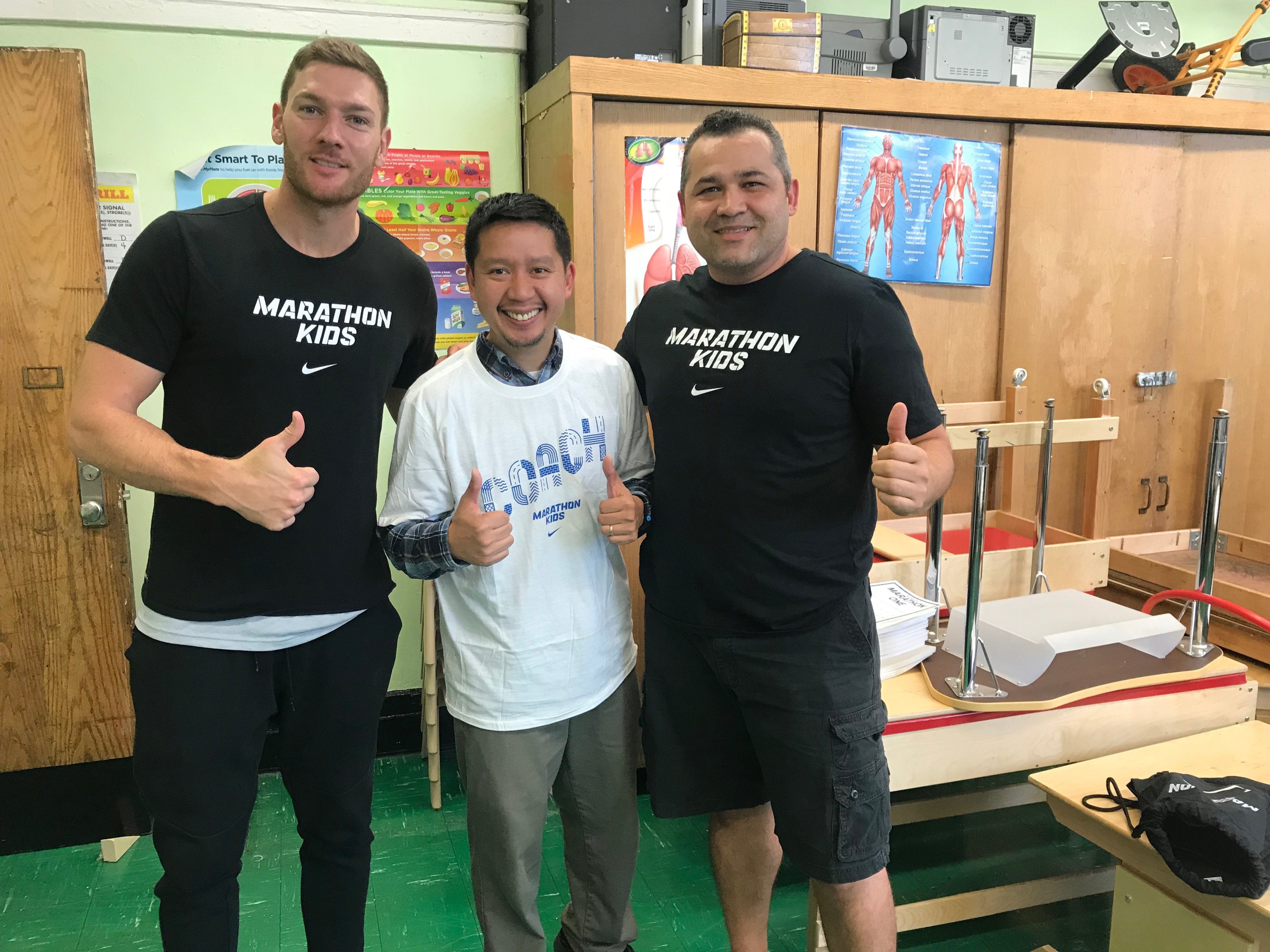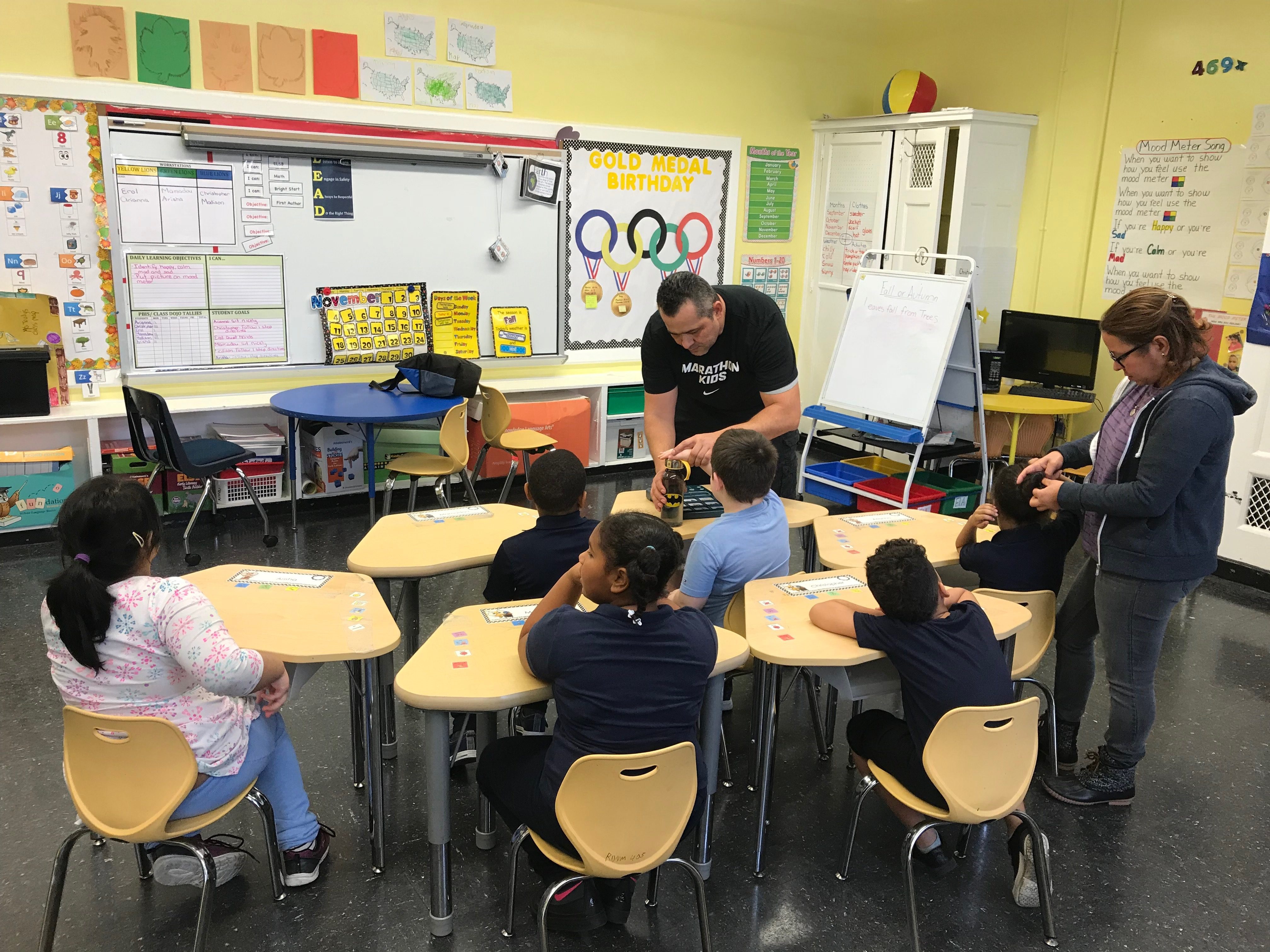There’s a saying we use around the Marathon Kids office: “If you’ve visited one Marathon Kids club, you’ve visited one Marathon Kids club.” They’re all so different. Each club is unique, each coach brings his or her own perspective and goals, and each group of runners comes from unique backgrounds and manages unique gifts and challenges. There is one common thread, however: All Marathon Kids experience a real benefit from the physical activity as well as the mentorship of passionate adults who care about them.

P469X – The Bronx School for Continuous Learners
Recently, our own Kenrick Tyrell spent the day with Coach Guevara at P469X – The Bronx School for Continuous Learners, a public school for children with autism, intellectual disabilities and other emotional and health needs in Bronx, New York. P469X also happens to be home to yet another unique Marathon Kids running club.
Coach Guevara
Coach G, as he is known at the school, started a Marathon Kids club because he wanted to motivate his students to engage in physical activity. “Running as a group is more motivating and fun,” Coach G says. “This is a non-skill dependent activity, and all my students can practice it beyond the school setting. Many of my students lack the physical skills and interest to engage in sports activities, but they all love to move around, so covering twenty-six-plus miles isn’t an issue.”
Coach G’s Marathon Kids runners are kindergarteners through fourth-graders with autism. “Some show very little interest in activities and need plenty of prompting and physical guidance,” Coach G says, “but with consistency and plenty of repetition, they have started to adjust to our new routine. The more verbal and more independent students love to show off how much and how fast they can run.”
Marathon Kids at P469X
A significant portion of P469X students come from low-income backgrounds, so the school’s Marathon Kids club was started with the help of a grant award. Limited funds aren’t the only issue at P469X, however; the school also grapples with space limitations. Housed in a four-story building in the heart of the Bronx, the school has only one very small playground that was under construction at the time of Kenrick’s visit, as well as a small indoor gym that is actually just a classroom. This leaves the Marathon Kids club with very little space to work with, but Coach G is dedicated to ensuring the kids get plenty of physical activity.
The students warm up by running laps around tables set up in the middle of the gym. Next, they move into the hallway, where they walk or run a back-and-forth route, complete with plastic arrows and cones as visual cues to support their coach’s verbal instructions. Thirty-six laps of the hallway equals one mile.
All of this activity happens during the school day, while class is in session in the other classrooms up and down the hall. Sometimes the noise can be disruptive, but all the other teachers agree that Coach G does well with the limited space and resources. The teachers also appreciate the benefits of physical activity for the students, including improved behavior, mood and physical health.
Coach G sees the intense workout as an obvious benefit for the students, but there are many other important benefits as well. “I can see them sweating and enjoying themselves,” he says. “Being part of the club also gives students a sense of belonging, and it helps develop tolerance and acceptance, because I tell my students that we can all run at different levels. I also ask my students to help someone up if they fall and to encourage each other to keep on moving as well as to give each other high-fives. The students seem calmer after we run, and that can help decrease misbehavior in the classroom.”
For Coach G, the biggest challenge in implementing his Marathon Kids club has been the lack of space in relation to keeping some of the students within boundaries. “Many of them are easily distracted by the environment, which can lead to disengaging from activities,” Coach G says. Having students run in the hallway is actually an important part of his strategy: He can close off all the doors, use cones and arrows as visual cues, and teach the students to run in a clockwise rotation, so their left arms are always closest to the wall. Each of these elements helps the students build on the familiar, repetitive experience of their running.
Coach G reports that the most rewarding aspect of his running club is seeing his students engaging in physical activity with big smiles on their faces. “Some of them get silly,” he says, “and I can hear them giggle as well.” Most of all, he says, “Regardless of their skill levels and interests, this is a positive experience for all of us.”


